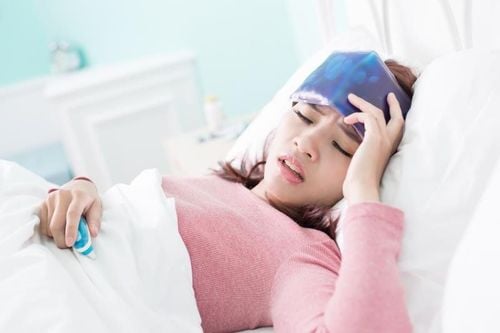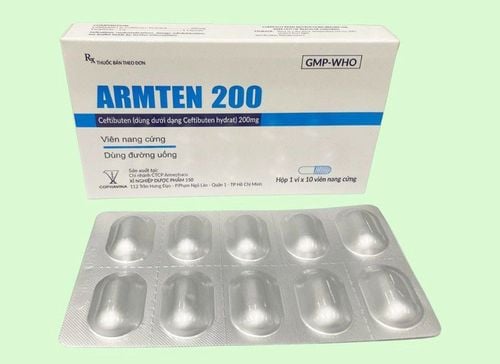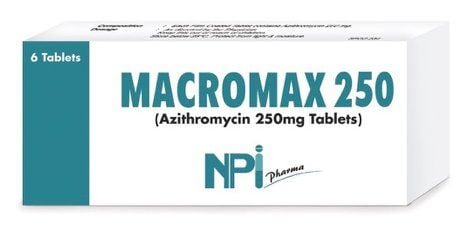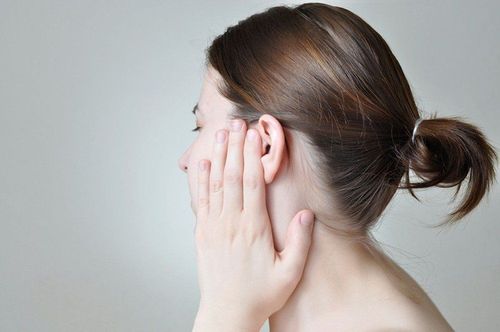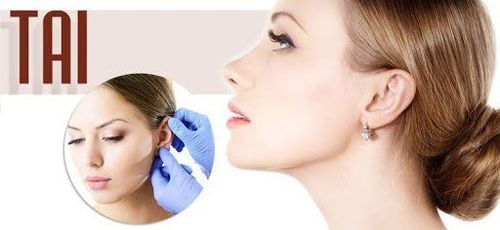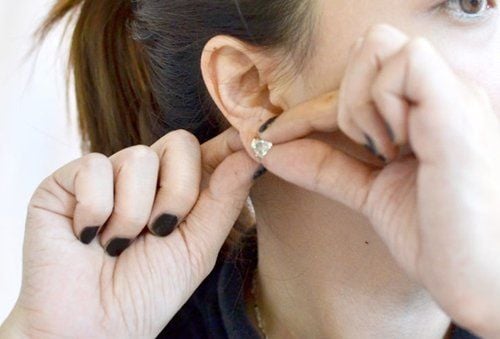This is an automatically translated article.
The article was professionally consulted with Doctor CKII Nguyen Van Thai - Department of Medical Examination & Internal Medicine - Vinmec International General Hospital Da Nang.If there is swelling and pain in the ear after piercing, ear trauma or other causes, it may be a sign of otitis media. This is a rather dangerous disease that, if not treated promptly and appropriately, can seriously affect the aesthetics and function of the auricle.
1. What is otitis externa?
The pinna, also known as the pinna, is part of the outer ear. The ear lobes have protrusions that allow people to receive sound from all sides without moving their ears or turning their heads. The rim consists of skin, cartilage, muscles, and ligaments. The cartilage of the ear is flexible, tough and elastic, helping to create the shape of the auricle.Ear cartilage inflammation is an infection in the cartilage area, the cartilage membrane of the ear.
The disease may appear after inappropriate treatment in patients with cellulitis of the outer ear, acute otitis externa, otitis externa, otitis media,, after an accident involving the pinna, after surgery surgery or after ear piercing through cartilage,...
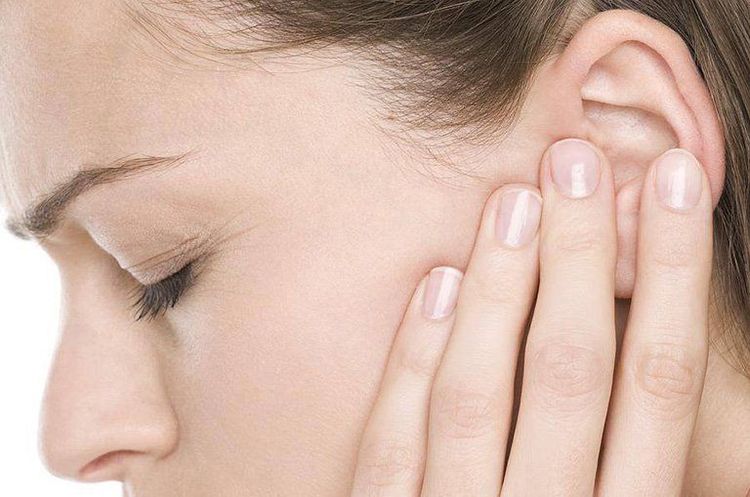
2. Stages of otitis media
Cartilaginitis caused by ear piercing usually goes through 4 stages of disease: otitis media - congestive - inflammatory - purulent and cartilage necrosis. If not treated in time, this condition can leave sequelae affecting aesthetics (ear cartilage loss, wrinkled ear skin, ear deformity), ear function (risk of ear infection, hearing loss, etc.) hearing loss or hearing loss). Even bacteria from the ear cartilage can enter the bloodstream, causing infections, leading to expensive costs, a long treatment process, and even the risk of death.3. Signs of ear cartilage inflammation
Manifestations of the disease depend on the length of time since the patient was exposed to the causative agent. Depending on the stage, patients with otitis externa will experience the following symptoms:Initially there are signs of burning, pain at the injury site. Then there is heat, swelling, and redness of the ear. When the inflammation becomes pus, the patient has more obvious ear cartilage pain, more swelling, a lot of swelling of the ear lobe, loss of normal folds. If left untreated, the disease can lead to necrotizing fasciitis with symptoms of severe pain, swelling and tenderness of the auricle, and loss of auricular folds. If not handled well, the cartilage of the ear canal is necrotic, leading to swelling, pus and pus, causing the ear to shrink, affecting the aesthetics. Other symptoms: Fever, fatigue,...
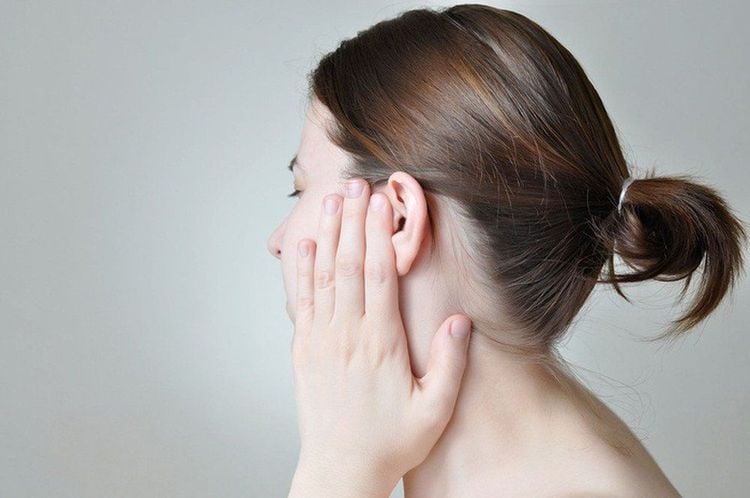
4. Diagnosis of otitis externa
When noticing the warning symptoms of otitis externa, the patient should see a doctor for proper diagnosis and treatment. This helps the patient avoid the risk of complications affecting the aesthetics and function of the auricle.Usually, the doctor can diagnose otitis externa by taking the medical history, doing a physical exam, and looking at the symptoms on the ear. In case the earlobe has fluid or pus, the doctor will culture bacteria to choose the most appropriate treatment method and antibiotic treatment.
5. Treatment of ear cartilage inflammation
5.1 Home care
Some home care measures can help reduce pain, support effective disease treatment. Specifically:In case of acne on the ear: The patient can use a soft cloth soaked in warm water to cover the ear. Then, use a squeegee to gently remove the pimple. Next, clean the squeegee thoroughly to avoid the risk of infection. In case of sunburn of the ear: The patient can apply ice to the sunburned skin or apply aloe vera gel to relieve pain. Relieve pain by applying a warm or cool compress to the ear. Cover your ears when going out in cold weather. In case of ear cartilage inflammation caused by piercing: Should clean the piercing place every day with diluted salt water, tie hair neatly so that the hair does not rub against the ear, do not apply drugs that have not been prescribed by the doctor. Water gets into the ear, avoid touching the ear unnecessarily.
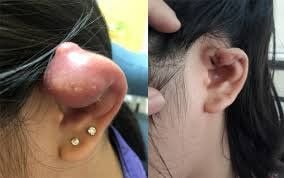
5.2 Drug use
Patients with otitis externa are usually prescribed to use the following drugs:Antibiotics of the group Ciprofloxacin, Fluoroquinolone,... usually according to the Antibiotic chart Anti-inflammatory drugs, steroid anti-edematous drugs. Analgesic . Severe cases: The patient has a lot of pain, the ear is swollen and red, and needs to be hospitalized with intravenous antibiotics, intravenous steroids and local care.
5.3 Surgery
For patients in the early stages, with symptoms of swelling and pain but no discharge, the patient only needs to take antibiotics, pain relievers or anti-inflammatory drugs. For patients who have had discharge from the earlobe, the doctor may prescribe aspiration and compression bandages. The patient was also prescribed antibiotics and anti-inflammatory drugs. If the perianal sac exudes superinfection into an abscess, the auricular cartilage is severely inflamed and necrotic, the patient will be treated immediately by wide incision of the abscess. This method helps to drain the pus pocket and scrape out the cartilage tissue of the otitis externa. After surgery, the patient was given antibiotics and anti-inflammatory drugs.
5.4 Proper diet
Foods to eat: Berries (strawberries, blueberries), fish (mackerel, anchovies, salmon), vegetables (kale, cauliflower), avocados, green tea, bell peppers, grapes, mushrooms, turmeric, dark chocolate, extra virgin olive oil, tomatoes, cherries,... Foods to avoid: Fast food, processed food, confectionery, fried food, refined starch (white bread, pasta, biscuits,...), sugary drinks, fried oil and grease, margarine, etc. Cartilaginitis can leave many unpredictable sequels to the patient, especially in terms of aesthetic function. Therefore, when there are warning signs of the disease, the patient should go to the doctor immediately to avoid possible dangerous complications. At the same time, there are many measures that can be applied to reduce the risk of having this disease such as: choosing a reputable ear piercing address, not piercing the earlobe, not applying strong and long pressure. ear,...Please dial HOTLINE for more information or register for an appointment HERE. Download MyVinmec app to make appointments faster and to manage your bookings easily.





